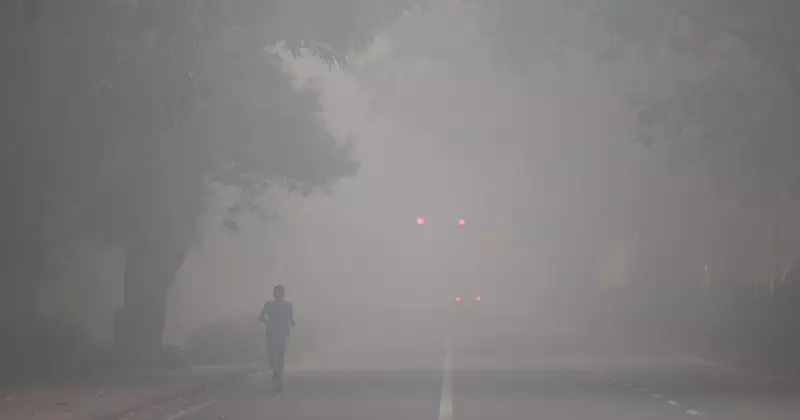
The morning after Diwali festivities, Delhi and the National Capital Region (NCR) found themselves engulfed in a thick, hazardous blanket of smog, turning the city into what many residents described as a 'gas chamber'. The air quality deteriorated dramatically overnight, pushing the Air Quality Index (AQI) into the 'severe' category across multiple monitoring stations.
A City Gasping for Breath
Visuals from across Delhi-NCR showed significantly reduced visibility, with iconic landmarks barely visible through the grey haze. The pungent smell of burnt fireworks lingered in the air, mixing with existing pollutants to create a toxic cocktail. Residents reported experiencing burning eyes, throat irritation, and breathing difficulties immediately upon stepping outside.
Official Readings Confirm Worst Fears
Monitoring agencies recorded alarming pollution levels:
- AQI values surged past 400-500 in most locations, well into the 'severe' zone
- PM2.5 concentrations reached multiple times the safe limits prescribed by WHO
- Several areas recorded AQI levels crossing 600, indicating emergency conditions
The System of Air Quality and Weather Forecasting and Research (SAFAR) and Central Pollution Control Board (CPCB) data painted a grim picture of the environmental crisis unfolding across the region.
Multiple Factors Converge to Create Perfect Storm
Meteorological conditions worsened the situation significantly:
- Firecracker Emissions: Despite restrictions, Diwali celebrations contributed substantial pollutants to the atmosphere
- Stubble Burning: Neighboring states continued agricultural burning, with smoke traveling toward Delhi
- Weather Conditions: Calm winds and low temperatures trapped pollutants close to the ground
- Local Pollution: Vehicle emissions and industrial pollution added to the toxic mix
Health Authorities Issue Urgent Advisories
Medical experts warned that exposure to such poor air quality could have serious immediate and long-term health consequences. Hospitals prepared for potential increases in respiratory-related emergency cases, particularly among vulnerable groups including children, elderly citizens, and those with pre-existing health conditions.
Doctors recommended: minimizing outdoor activities, using N95 masks when going outside, keeping indoor air purifiers running, and staying hydrated to help the body cope with the pollution assault.
What Lies Ahead?
With weather forecasts predicting continued unfavorable dispersion conditions, authorities fear the air quality crisis might persist for several days. The Graded Response Action Plan (GRAP) measures remain in force as the city struggles to breathe through what has become an annual environmental emergency.





